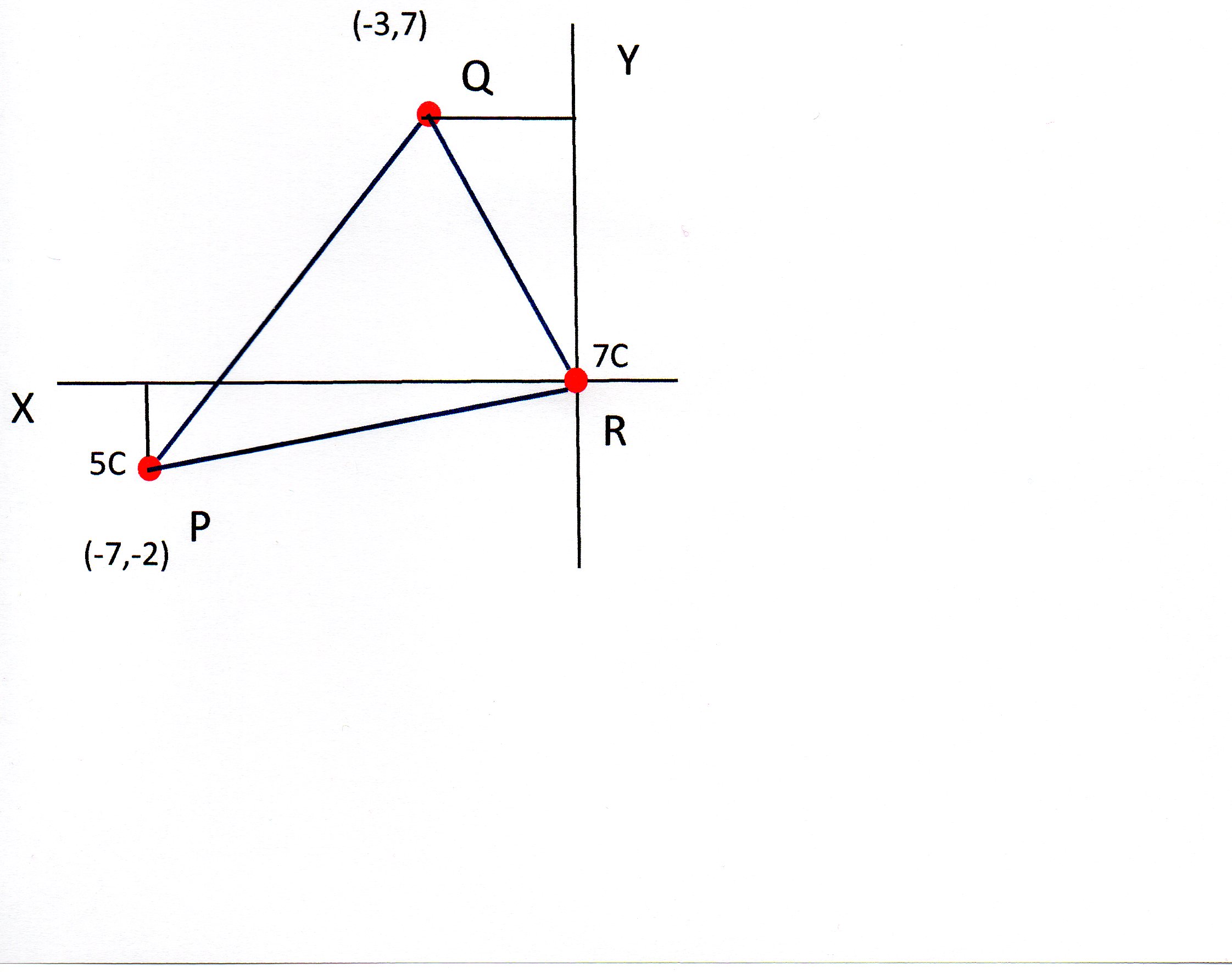A charge of 7 C7C is at the origin. How much energy would be applied to or released from a 5 C5C charge if it is moved from (-3 , 7 ) (−3,7) to (-7 ,-2 ) (−7,−2)?
1 Answer
Explanation:
 MFDocs
MFDocs
I'll work out the electric potential at points P and Q.
Then I will use this to work out the potential difference between the 2 points.
This is the work done by moving a unit charge between the 2 points.
The work done in moving a 5C charge between P and Q can therefore be found by multiplying the potential difference by 5.
We need to find the length of PR and PQ which can be done using Pythagoras:
and:
The electric potential due to a charge
So the potential at point
The potential at
So the potential difference is given by:
So the work done in moving a 5C charge between these 2 points is given by:
This is the work done on the charge.
There are no units of distance given. If this was in meters then

